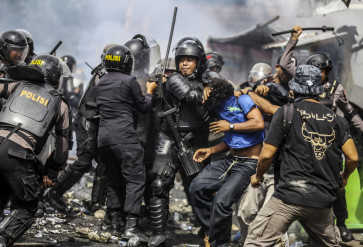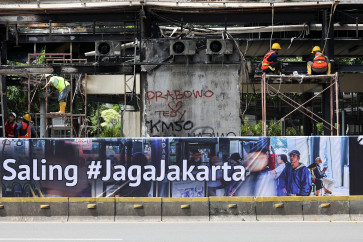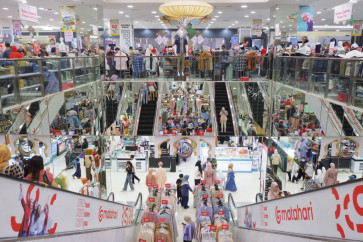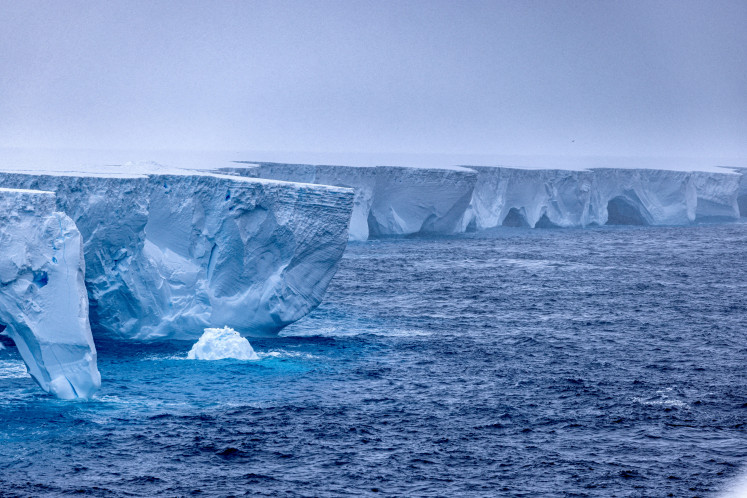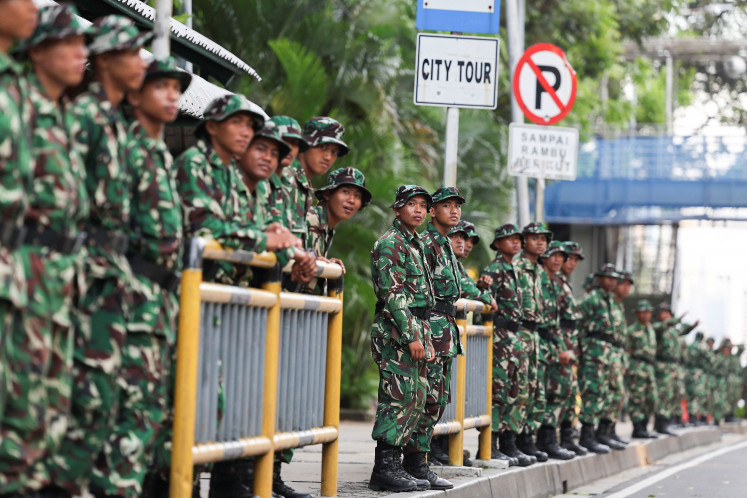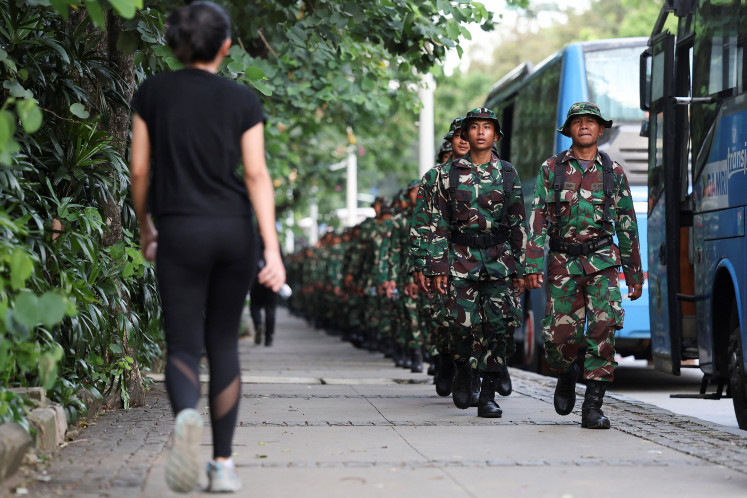Popular Reads
Top Results
Can't find what you're looking for?
View all search resultsPopular Reads
Top Results
Can't find what you're looking for?
View all search resultsWinter greetings from the glaciers of Chamonix Mont-Blanc
Tucked away among the summits of the French Alps, the valley city of Chamonix Mont-Blanc received its first snowfall of 2017 on Dec. 7.
Change text size
Gift Premium Articles
to Anyone
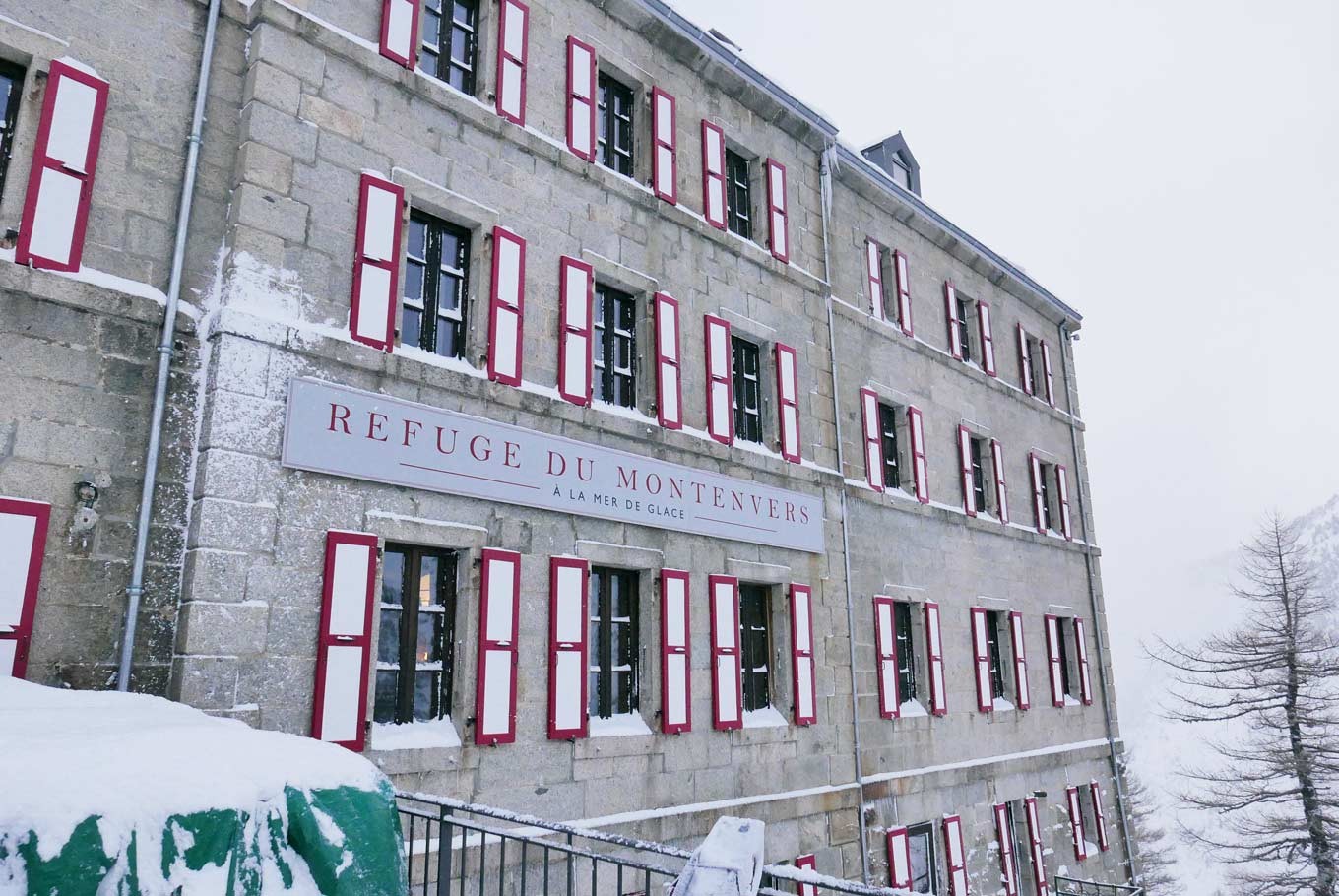 Perched over a cliff and surrounded by the both the mountains and the Sea of Ice (Mer de Glace) Refuge du Montenvers Terminal Neige hotel is the ideal place to unwind, while enjoying the view of glaciers from its Glaciorium. The hotel was built in 1880 to accommodate the first mountaineers who went to Montenvers to see the Sea of Ice. (JP/Asmara Wreksono)
Perched over a cliff and surrounded by the both the mountains and the Sea of Ice (Mer de Glace) Refuge du Montenvers Terminal Neige hotel is the ideal place to unwind, while enjoying the view of glaciers from its Glaciorium. The hotel was built in 1880 to accommodate the first mountaineers who went to Montenvers to see the Sea of Ice. (JP/Asmara Wreksono)
T
ucked away among the summits of the French Alps, the valley city of Chamonix Mont-Blanc received its first snowfall of 2017 on Dec. 7. The Jakarta Post was greeted by Chamonix Mont-Blanc promotion manager, Chloé Ancrenaz upon arrival. “You are lucky to have arrived this morning. We just had our first snow last night so all the snow you see is fresh,” she said.
The 20 centimeter-deep snow cover did not stop us from getting to our first destination: Osmose Cuisine, a culinary cooperative comprising independent chefs that provide catering services. “Tourists in Chamonix usually rent mountain chalets, and after skiing, or if they don’t really want to cook for themselves, that’s where we come in,” said chef Olivier Cheilan.
Aside from tasty and carefully crafted local gourmet treats like macaroons, tasty hors d’oeuvres, pan-seared scallops and much more, Japanese food, especially sushi, has taken Chamonix by storm in the last few years. Chef Olivier said, “We have a self-taught sushi chef in Osmose, who will prepare sushi for the guests of Chamonix.” The culinary initiative not only provides catering services, but also offers cooking classes as an indoor activity after enjoying the valley’s great outdoors.
While some prefer private chefs to whip up their dishes throughout their holidays, others might prefer the plethora of restaurants within the city. One to try is the stylish contemporary restaurant called Le Cap Horn, which specializes in seafood and Savoyard specialties. The restaurant also serves sushi and offers prestige wines, making it an ideal afterhours hangout.
The four villages in the valley of Chamonix Mont-Blanc are home to a total of 13,857 inhabitants, and have ample space to welcome tourists in the wintertime, providing a total of 82,225 beds for tourists, with 17,115 in hotels and 65,160 in private lodgings.
Skiing is more than just a tourist attraction in Chamonix Mont-Blanc, it’s a tradition. Originally used by Chamonix’s first skier, Dr. Michel Payot, for his daily visits to the valley as a medical practitioner, skis have since gained wide spread popularity. In 1905, the first Tour du Mont-Blanc on skis was introduced by Joseph Ravanel and Dr. Payot. However, it was not until 1908 that the first major winter season really took place. Once known as a summer destination, Chamonix earned the reputation of being the place where enthusiasm for winter sports really started.
The International Ski Competition in 1908 was the second major official winter sports event organized in France by the French Alpine Club after previously being held in Montgenévre in 1907. The event marked Chamonix’s introduction to the international world with participating skiers coming from Norway and Switzerland, and cemented the valley’s status as a winter resort, as aspired by Dr. Payot.
One of the main attractions, aside from the intriguing ski slopes, in Chamonix Mont-Blanc is the Mer de Glace (Sea of Ice), the largest glacier in France, which stretches some 7 kilometers and is 200 meters deep. Visitors can board the over 100 year-old legendary red train from Chamonix town center up to Montenvers, and spend the night at the Terminal Neige Montenvers hotel, which was built in 1880 and served as a lodging for the first mountaineers and travellers who visited the Mer de Glace.
“The Terminal Neige Montenvers hotel has hosted many important public figures who came in the past for leisure, as well as those who came to find inspiration for their important works,” said Winnalia Lim, marketing and event coordinator for ASEAN of Atout France. The names and photos of the public figures who have stayed in the hotel are represented in each room and suite of the lodge, including British writer Mary-Shelley, Hungarian pianist/composer Franz Liszt and many more.
The man-made Ice Grotto/Cave and Glaciorium are the perfect places for educational trips where visitors can learn about glaciers and the role they play as indicators of the surrounding environment’s well-being.
Living so close to nature’s wonders, the people of Chamonix Mont-Blanc are known for living an eco-friendly lifestyle. In 2013, the Chamonix Mont-Blanc valley was awarded the Flocon Vert label, an award that recognizes the commitment of mountain destinations to the development of sustainable tourism. Through the Territorial Climate Energy Plan (PCET), the area also implements policies to reduce the ecological footprint of tourism and promote gentle and respectful tourism.
The eco-friendly ways Chamonix Mont-Blanc are also followed by restaurateurs through Operation Gourmet Bag. In order to reduce food waste, the SITOM of the Valleys of Mont-Blanc supplies restaurants with 100 percent recyclable and 100 percent compostable boxes free of charge for take-away dishes.
Tips for Chamonix winter travels
♦ Bundle up; prepare warm winter attire as temperatures may drop to -11 degrees Celcius.
♦ Be flexible, as many activities depend on weather conditions.
♦ Wear proper snow boots, as even in the city center, the snow may reach 20 cm thick.
♦ Order your halal meal before arrival. Most restaurants have non-pork options, but some can also cater to halal food needs upon request.
♦ Enjoy the winter wonderland, and try to come back in the summer for a totally different experience.

